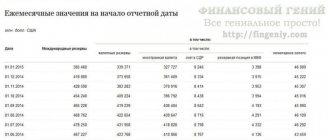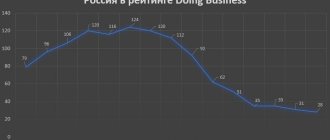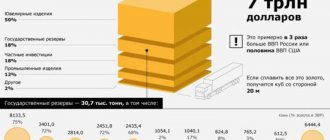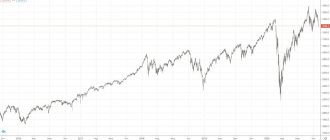Gold is in demand not only among the population, who invest in this precious metal and buy jewelry made from it, but also among the Central banks of many countries around the world. Gold is an integral part of the gold reserves of central banks and the state Ministry of Finance. Gold reserves allow the state to form a so-called anti-crisis reserve and stabilizer of the national currency exchange rate. Thanks to large reserves of gold, the state gains economic independence, since with its resources it can use the precious metal as a means of payment. The answer to the question of how much gold the countries of the world have is of interest to many people who follow the political and economic situation in the leading countries.
Reserves of gold and countries of the world by year
Gold reserves of various countries
The largest reserves of the precious metal belong to the IMF (International Monetary Fund), as well as Germany and the United States.
The total reserve reserves of European countries are greater than those of the United States, despite the fact that the United States has the highest gold reserves among other countries. Iran also has a large reserve of gold (for 2012-2013, how much is currently unknown), which is estimated from 340 to 900 tons. At the same time, it actively uses the yellow metal for payments in trade with other countries.
But the largest reserves of gold in the world belong to private individuals. The most striking example is that according to 2021 statistics, Indian citizens owned more than 20 thousand tons of yellow metal. Residents of Germany own 4 thousand tons in the form of gold bars and coins.
European Union
The reserve stock of gold in 2021 is more than 12 thousand tons , and this is the main factor in maintaining the stability of the euro currency. EU states such as Great Britain, Sweden, Romania, and Poland have considerable reserves of the precious metal.
US Gold Reserve
America's gold reserves were created during the crisis years of the Great Depression in 1933. According to the state decree on the nationalization of the precious metal, the entire population handed over their yellow metal to the state at a cost of $20.66 per 1 ounce. After this, the price of gold rose to $35 per ounce. From 1941 to 1945, the gold reserve reached its maximum - more than 20 thousand tons. Subsequently, the United States often used the precious metal to stabilize the national currency, which reduced the gold reserves several times.
The United States holds the gold reserves of about sixty other countries. The volume of these reserves is not made public.
French gold reserve
Since 1944, France has joined many other countries in the Bretton Woods Agreement. As a result, the exchange rate was stabilized and gold became pegged to the US dollar. In the sixties, the head of government, General de Gaulle, decided to exchange dollar reserves for gold. As a result, the share of the precious metal in the country's reserves increased by 13% and reached 4,400 tons by 1965.
China gold reserve
Since 2009, the People's Bank of China has not made public the size of its gold reserves. In recent years, China has been buying up the yellow metal en masse. In 2013, 622 tons of gold were purchased, making this country the largest consumer of the precious metal in the world. Since 2007, the country has taken a leading position in the world in terms of trading volume on the Shanghai Gold Exchange and gold production. As of 2020, China is the absolute leader in gold reserves.
Gold reserve of Russia
By the beginning of 2021, Russia ranked fifth in the world in reserve reserves of the precious metal. Russia's gold reserves amounted to 1,550 tons. 2/3 of it is kept in the Central Bank of Russia in Moscow.
Source of infographics Arguments and Facts.
Reliability and sovereignty
This yellow metal has long occupied its niche in people’s lives: it is needed not only to create jewelry masterpieces, but also to ensure the exchange rate, economic stability and even independence. Sometimes gold can also act as a universal means of payment - it cannot be blocked like a foreign currency account. World reserves are growing by country, and this trend continues.
The global financial system is built focused on one player - the United States of America:
- most transactions in the world are carried out in the currency of this particular country;
- about six dozen countries placed their gold and foreign exchange reserves or part of them in trust in the United States.
Special facilities at Fort Knox, the American Mint, West Point and the Federal Reserve Bank store 4500, 1400, 1700 and 400 tons of the precious metal, respectively. This state of affairs allows the United States to put pressure on the governments and policies of states that have entrusted almost part of the guarantees of their sovereignty to America. However, you should not assume that this is the only place where other people’s gold is stored.
For example, Germany put them in different baskets: it stored parts of its stock in the USA, England and France. In times of political crises, the issue of economic independence becomes the most pressing. In addition, the reliability of a business partner, whose debt is almost equal to the gross income (leading experts in the field of economic relations say this), gives rise to certain concerns.
And the fact that since 2013 Germany has been persistently working to return its gold “to its homeland.” During this time the following returned to the country:
- from the USA - 18.4%;
- from England - 0.2%;
- from France - 8.3% of the German gold reserves located there.
Now 47.9% of reserves are stored in Frankfurt am Main. The withdrawal process continues.
The example of Germany has become a clear illustration of the aggravation of American-European relations and the conflict of interests in the European Union itself. Many European countries have signed the Central Bank Gold Agreement. The fourth version of the SEC obliges its participants to refrain from selling significant volumes of the precious metal. By the way, it is very significant that the Republic of Turkey also withdrew its gold from the United States. There was not so little of it there - 220 tons.
Leading countries in gold production
Today, there are five countries that dominate gold mining. The leading gold producing countries are China, South Africa, Peru, Australia, and the USA.
China
Topping the list is China, which has been the world's largest gold producer since 2007. The volume of precious metal production increased over the annual period by 5.89% and amounted to 380.23 tons. Mines are being actively developed not only in our country, but also abroad.
China has been the leader in gold mining for 7 years.
Australia is in second place. 330 tons of precious metal per year.
If we talk about the Australian gold reserve, it is mainly concentrated in the protrusions of the Precambrian basement. There are also large deposits in the cities of Western Australia and small ones throughout almost the entire continent. Also, Australia produces the largest gold coin in the world, weighing 1 ton.
The third place of honor belongs to Russia - 295 tons
Active gold mining and export abroad continues in 2021.
The fourth place belongs to the USA. 200 tons of gold per year
Gold is mined from 18 large and 32 small mines, where it is mined with non-ferrous metals. Most of them are located in Nevada. The largest and oldest mine in the country is the Homestake Mine in South Dakota. Over 100 years, more than 1000 tons of gold were mined there. The keen interest in the yellow metal has recently contributed to the intensification of geological exploration. As a result, a number of new gold deposits were discovered.
Gold reserves place the United States in first place in the world.
Peru – 130 tons per year
Peru is a country with an agrarian economic structure with a developed manufacturing and mining industry. The country is rich in natural resources: copper, gold, silver, phosphates, oil, gas, coal, iron ore.
However, it should be noted that this “five” is often subject to change, since the gold production indicators of different countries are subject to change.
People's Republic of China
The largest holder of gold among East Asian states and a serious threat to US dominance. According to published data, in 2021 and 2021 the volume of national gold reserves amounted to 1842.6 tons . The share of all gold and foreign exchange reserves is only 2.4%. But it’s worth considering that this is not so little at all: in 2021, the PRC’s reserves were equal to $140 trillion.
China's activity in purchasing aurum in the gold market is growing, the Shanghai Gold and Exchange Exchange is increasing trading volumes. The Celestial Empire has significantly strengthened its position, becoming the leader in the production of this precious metal and one of its largest consumers.
Table of countries with the largest gold reserves (2019)
| № | A country | Volume (tons) | % of gold in the country's gold and foreign exchange reserves |
| 1 | USA | 8134 | 75 |
| 2 | Germany | 3370 | 70 |
| 3 | International Monetary Fund (IMF) | 2810 | |
| 4 | Italy | 2452 | 66 |
| 5 | France | 2440 | 61 |
| 6 | Russia | 2180 | 19 |
| 7 | China | 1890 | 2,5 |
| 8 | Switzerland | 1040 | 5,5 |
| 9 | Japan | 760 | 2,5 |
| 10 | Netherlands | 612 | 65 |
| 11 | India | 610 | 6 |
| 12 | European Central Bank | 505 | 28 |
| 13 | Taiwan | 420 | 4 |
| 14 | Portugal | 380 | 60 |
| 15 | Kazakhstan | 360 | 55 |
| 16 | Uzbekistan | 350 | 53 |
| 17 | Saudi Arabia | 320 | 3 |
| 18 | Great Britain | 310 | 8 |
| 19 | Türkiye | 290 | 14 |
| 20 | Lebanon | 285 | 23 |
Switzerland
Part of Switzerland's gold reserves are stored in the UK and Canada
The recognized world banking capital, although it ranks 7th in the ranking, is a confident leader in terms of the amount of gold per capita. The reserves of this precious metal in the country are estimated at 1040 tons (only 5.4%).
We recommend reading: The world's largest precious metals exchanges
Russia's strategic reserve
Geopolitical reasons and the desire to ensure the safety of its reserves in a situation where sanctions follow one after another, payments in dollars are limited, the state has set a course for replenishing the gold reserve and adjusting gold purchases. In addition, the share of American bonds in gold and foreign reserves decreased significantly: from 96 to 16 billion dollars.
Over the past ten years, expenses have quadrupled, and thanks to this, the “golden share” has increased tenfold. Well, in just three quarters of 2021, a third more was spent on the purchase of precious metals than in 2021. The pace of purchases is such that experts believe that in the foreseeable future, in just three years, Russia may become one of the three largest holders of gold. So far the Russian Federation is in fifth position.
There are two types of gold stored in the gold and foreign exchange reserves of the Russian Federation: bullion and monetary. In different years, the percentage of this component varied, as did its physical volume. The minimum quantity was noted in 1991 - 290 tons. At the beginning of 2021, the Central Bank announced a figure of 1,838.8 tons, and already in September it announced a much more impressive figure of 1,998.5 tons. This is 16.8% of the country's total gold and foreign reserves.
There are many tables that summarize data on gold and currency reserves of different countries. It is worth noting that the true size of the gold reserve is a state secret. Therefore, data on how much precious metal Russians have varies from source to source:
- officially announced 1999.95 tons;
- in data released by Bloomberg, it is 2170 tons;
- According to information from the World Gold Council, the presence of 1970 tons is confirmed, with a total value of 77.5 billion dollars.
Centuries passed, states were born and collapsed, but the role of the yellow precious metal remained unchanged. In an empire or republic, it was a measure of the country's security and power and helped reduce financial losses of the budget during periods of crisis. Is it any wonder that the gold reserves of the world's countries are steadily growing? If, of course, there are funds in the budget to purchase this metal.
Cost of gold and purchases
A troy ounce of the yellow metal (this is approximately 31 grams) costs an average of 1250-1270 US dollars. 1000 kilograms of gold costs more than $40 million, and all mined gold in the world is estimated at $7.5 trillion.
After the crisis of 2008, most countries in the world began to increase their gold reserves. 2021 broke all records for the purchase of valuable metal - countries purchased 148.45 tons in 4 months. In 2021, almost the same amount of gold was purchased as in 2021. The largest amount of gold was purchased by the Central Bank of Russia - 55 tons. The Central Bank of China came second with 33 tons. The main exporters of gold are Mongolia and Uzbekistan.
How gold and foreign exchange reserves of countries around the world are formed and used
The use and formation of currency and gold reserves occurs in accordance with three economic models:
- the first model looks like this: the Central Bank of the country, being the owner and manager, is vested with the authority to influence the level and composition of gold and foreign exchange reserves in order to maintain a stable exchange rate of the national currency. A similar model is used in Germany and France;
- the second model differs from the first in that it is not the Central Bank, but the Ministry of Finance or the Treasury that acts as the owner and manager of gold and foreign exchange reserves, and the Central Bank is responsible for executing orders and conducting payment transactions;
- the third model is a combination of the two previous models, that is, responsibilities for the formation and use of gold and foreign exchange reserves are distributed between the Central Bank and the Ministry of Finance.










